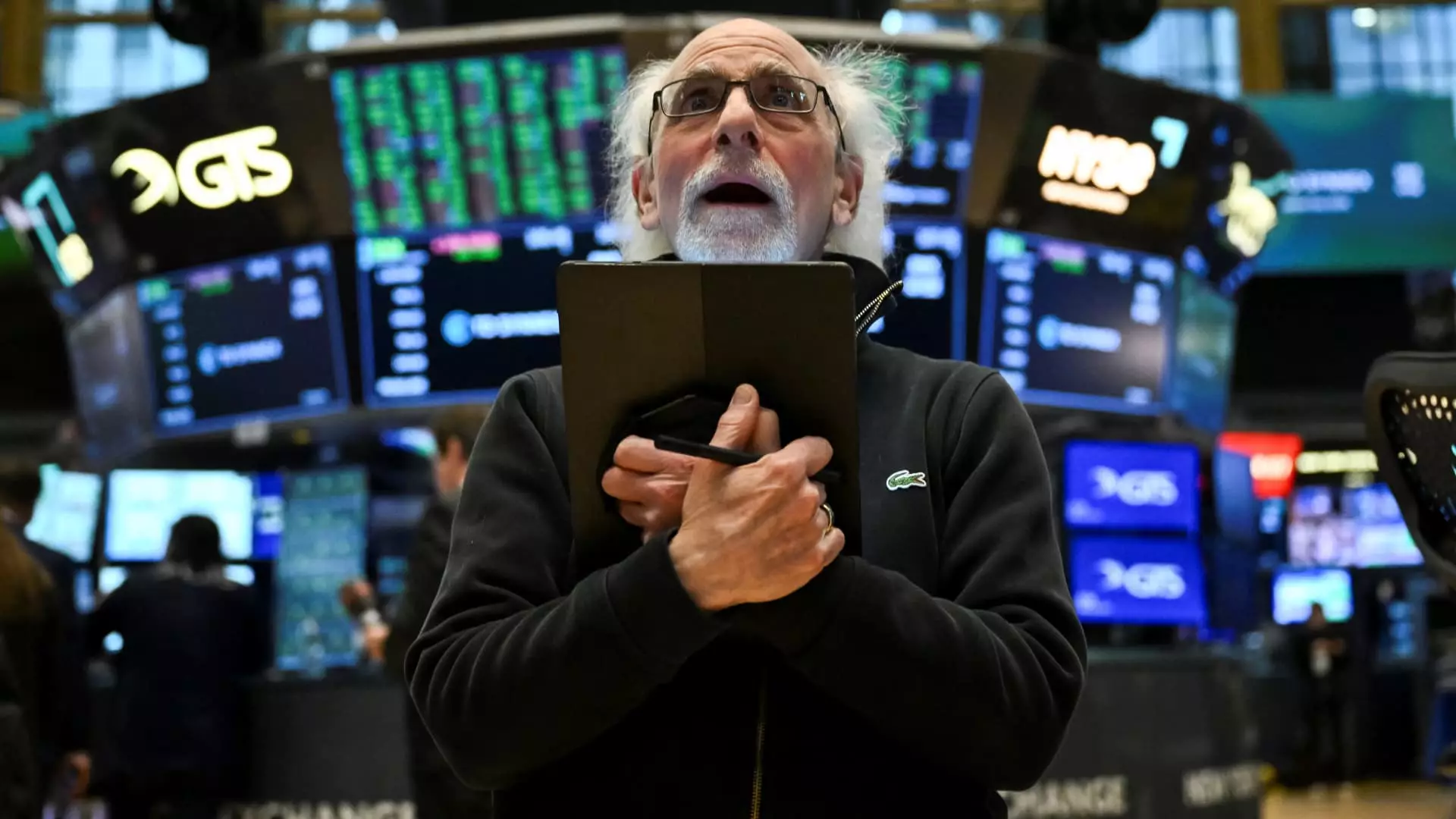In a striking display of market dynamics, hedge fund short sellers found themselves scrambling to exit their positions during an unexpected surge in stock prices on a seemingly ordinary Wednesday. The day transcended typical trading antics, morphing into an epic narrative of desperation characterized by an overwhelming rush toward closure. Wall Street witnessed what some have dubbed “the greatest short squeeze in recent history,” a phenomenon illustrating the thin line between sophisticated investing strategies and unforeseen market reactions. Such instances unveil the fragile nature of financial markets and raise critical questions about the sustainability of hedge funds’ tactics.
The Squeeze Explained
To comprehend the impact of this massive sell-off, it is vital to understand the mechanics of short selling. At its core, short selling allows investors to profit from an expected decline in a stock’s price. Hedge funds that engage in this risky endeavor borrow shares and sell them, hoping to buy them back at a lower price. However, the scenario dramatically flipped when the stock market rewarded bullish sentiment triggered by news of halted tariffs that had previously alarmed traders. Those who had anticipated falling prices found themselves caught in an unavoidable predicament, forced to buy back shares at soaring prices—a classic short squeeze.
This phenomenon not only inflicted immediate financial distress on short sellers but also intensified the volatility across the market. The S&P 500 experienced its third-largest gain since World War II as a result, a staggering 9.5% increase fueled primarily by the buying pressure of short covering. Such surreal market movements reveal the underlying fragility in betting against market sentiment; even seasoned traders can find themselves heavily outmaneuvered by quick shifts in investor psychology.
Riding the Wave of Panic
Despite the initial chaos, there was a pulse of discipline running through the market. Long-only investment funds seized the opportunity, investing colossal sums into tech stocks, particularly during the latter half of the trading day. This critical behavior reflects not just opportunism but a trend of confidence among long-term investors who saw a silver lining amidst the uncertainty.
However, Oppenheimer’s trading desk articulated the duality of the situation, remarking on the palpable pain amongst short sellers grappling with extreme whipsaws. It is striking how a relative handful of players can create such a significant ripple effect in the market. An alarming level of paranoia seemed to permeate the trading floor, an unsettling reminder that in a world increasingly defined by rapid trading capabilities and algorithmic strategies, human emotions still govern unpredictability.
The Role of Liquidity in Market Movements
On that fateful day, the thin liquidity of the market played a crucial role in amplifying price swings. Observations revealed that the trading size for stock futures had plunged to an unprecedented low of $2 million, directly contributing to the dramatic movements in stock prices. A lack of liquidity creates an environment conducive to violent price fluctuations, where even modest buying or selling can have outsized effects on market valuation. The events underscored how closely market movements are tied to structural elements, rendering predictions increasingly volatile.
Yet, as the initial excitement dissipated, caution crept in again. The market recalibrated, as murmurings about high tariffs and economic uncertainty re-emerged, prompting traders to reevaluate their positions. For the short-sellers still nursing substantial bets against the market, a new worry loomed—if prices were to rally again, the same short positions could spark another wave of buying to cover losses.
The Bigger Picture: An Ongoing Battle
The tension in the markets serves as a lens revealing the ongoing battle between optimism and pessimism. The lingering large short positions might serve as tinder for future market movements, hinting at sustained volatility hovering in the background. Rather than an isolated event, the Wednesday surge feels symptomatic of a larger trend where fear and exuberance coalesce in unpredictable ways. Traders are now navigating a landscape fraught with uncertainty, where every upward movement may prompt a flurry of short-selling closures, suggesting that the tumult is far from over.
Navigating the intricacies of the market demands a delicate balance of intuition, analytics, and perhaps a touch of luck. This short squeeze phenomenon stands as a stark reminder that while markets can frequently trend towards rationality, they often dance chaotically, driven by human emotion, algorithmic precision, and the unpredictability of external events. The remarkable interplay between profit and peril showcases that at any moment, the well-structured plans of traders can be thwarted by sheer market dynamics, leaving them to grapple with the haunting question: “What will tomorrow bring?”

